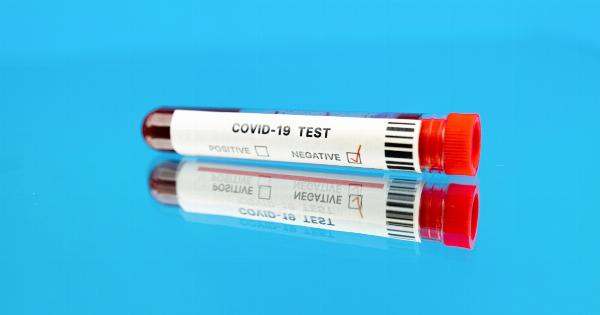Osteoporosis is a medical condition that occurs when the bones become brittle, fragile, and porous. It’s a silent disease that can weaken your bones gradually, without any signs or symptoms.
However, it increases the risk of fractures and can lead to pain, disability, and even death. According to the International Osteoporosis Foundation, one in three women and one in five men over the age of 50 will experience osteoporotic fractures in their lifetime.
Therefore, it’s essential to assess your risk of osteoporosis and take preventive measures if necessary.
What Causes Osteoporosis?
Before we dive into the tests that can help you identify your risk of osteoporosis, let’s understand the causes and risk factors associated with this disease.
Osteoporosis occurs when the bones lose minerals, such as calcium, faster than the body can replace them. This leads to a decrease in bone density and strength, making them fragile and prone to fractures.
The following factors can increase the risk of osteoporosis:.
- Gender: Women are more likely to develop osteoporosis than men because they have smaller bones and lose bone density faster after menopause.
- Age: The risk of osteoporosis increases with age because the body’s ability to absorb and use calcium decreases over time.
- Family history: If you have a family history of osteoporosis, you may be more likely to develop the disease.
- Low calcium intake: A diet low in calcium can contribute to a loss of bone density.
- Smoking: Smoking cigarettes can lead to a decrease in bone density and an increased risk of fractures.
- Alcohol consumption: Heavy drinking can cause bone loss and increase the risk of fractures.
- Sedentary lifestyle: Lack of exercise or physical activity can lead to bone loss and increase the risk of falls and fractures.
- Medical conditions: Certain medical conditions, such as hyperthyroidism, rheumatoid arthritis, and celiac disease, can increase the risk of osteoporosis.
- Medications: Long-term use of certain medications, such as corticosteroids and anticonvulsants, can increase the risk of osteoporosis.
Two Tests to Identify Your Risk of Osteoporosis
If you’re concerned about your risk of osteoporosis, there are two simple tests that you can do to assess your bone health.
1. Bone Density Test
A bone density test is the gold standard for diagnosing osteoporosis. It measures the mineral content of your bones, usually in the hip, spine, or wrist, and compares it to the average values for your age and gender.
The test is painless and non-invasive, and it usually takes 10 to 30 minutes to complete.
The bone density test can help identify your risk of fractures and monitor the effectiveness of your osteoporosis treatment. It’s recommended for women over the age of 65, men over the age of 70, and anyone who has risk factors for osteoporosis.
2. Fracture Risk Assessment Tool (FRAX)
The Fracture Risk Assessment Tool (FRAX) is a calculator that estimates your risk of fractures based on your age, gender, weight, height, family history of hip fracture, smoking status, alcohol intake, and medical history.
The FRAX score predicts the likelihood of someone developing a major bone fracture in the next ten years. If your FRAX score is high, you may need a bone density test to confirm your diagnosis of osteoporosis.
Interpreting Your Test Results
After taking the bone density test and the FRAX calculator, you’ll get your test results, which you’ll need to interpret. Here’s what you need to know:.
Bone Density Test Results
The bone density test results are reported as a T-score and a Z-score. The T-score compares your bone density to that of a healthy young adult of your gender, while the Z-score compares it to that of people of your age and gender.
A T-score of -1 or above is considered normal. A T-score between -1 and -2.5 indicates low bone mass, also called osteopenia, which means you have a higher risk of developing osteoporosis. A T-score below -2.5 indicates osteoporosis.
If you have a low T-score, your doctor may recommend lifestyle changes, such as increasing your calcium and vitamin D intake, exercising regularly, quitting smoking, and reducing alcohol intake.
In some cases, medication may be prescribed to prevent bone loss or increase bone density.
FRAX Results
The FRAX results are reported as a percentage that indicates your ten-year probability of developing a hip fracture or a major osteoporotic fracture, such as a vertebral, forearm, or hip fracture.
A FRAX score of less than 10% is considered low risk, while a score between 10% and 20% is moderate risk. A score above 20% is high risk.
If your FRAX score is high, your doctor may recommend a bone density test to confirm your diagnosis of osteoporosis. You may also need medication to prevent fractures.
Conclusion
Osteoporosis is a disease that can weaken your bones and increase your risk of fractures. It’s essential to assess your risk of osteoporosis, especially if you’re over the age of 50 or have risk factors for the disease.
The bone density test and the FRAX calculator are two simple and effective tests that can help you identify your risk of osteoporosis. Interpreting your test results correctly can guide your preventive measures and treatment options.































